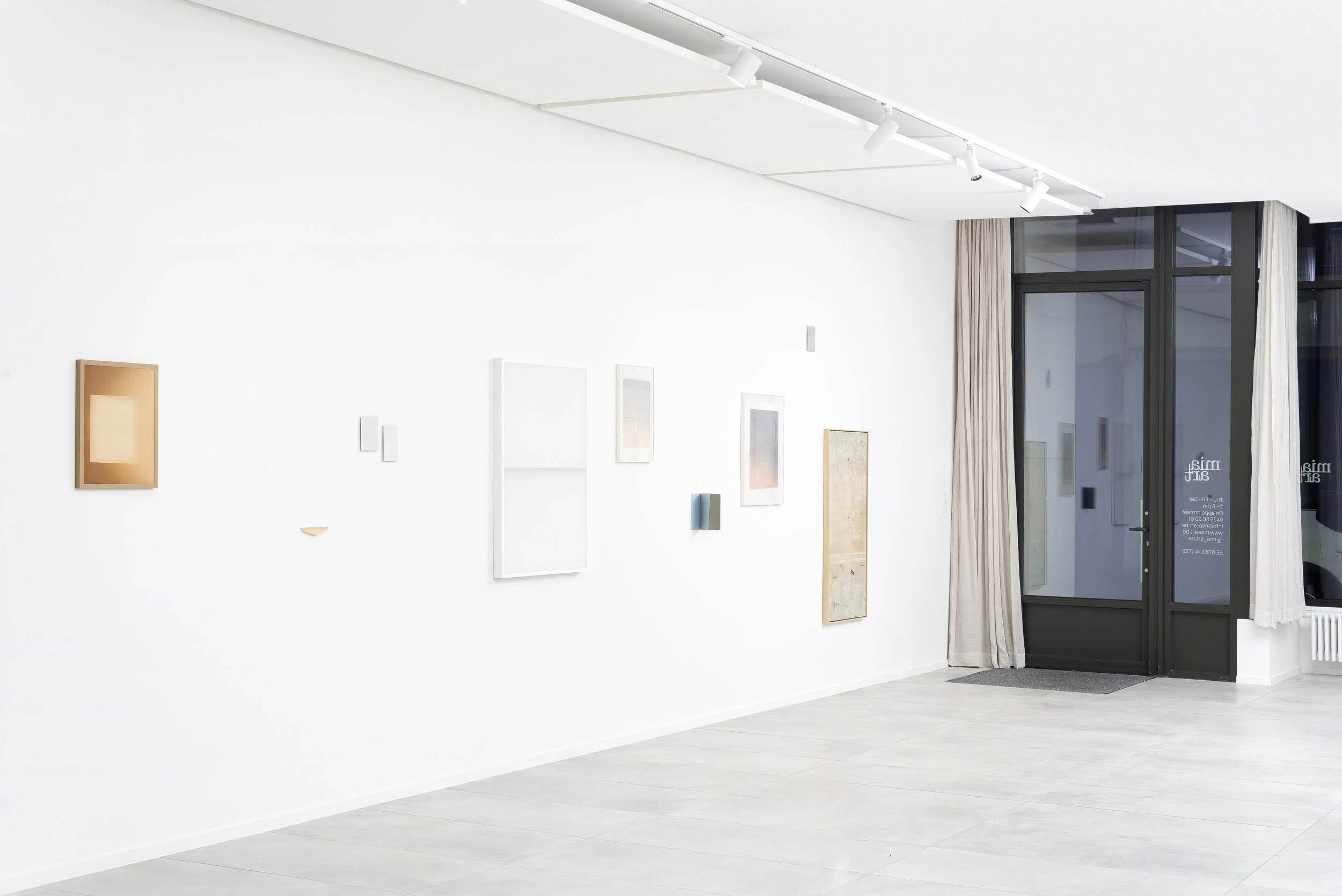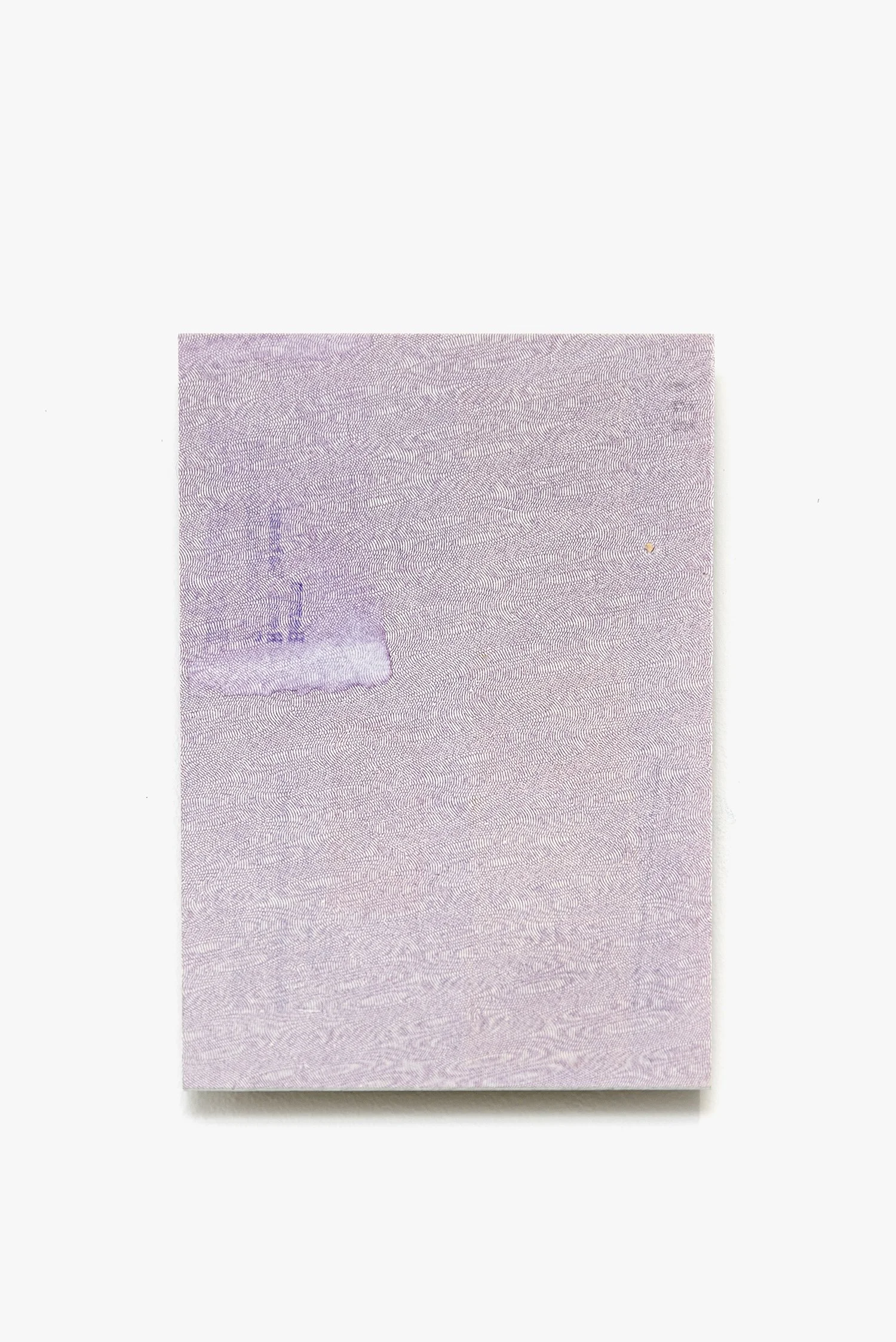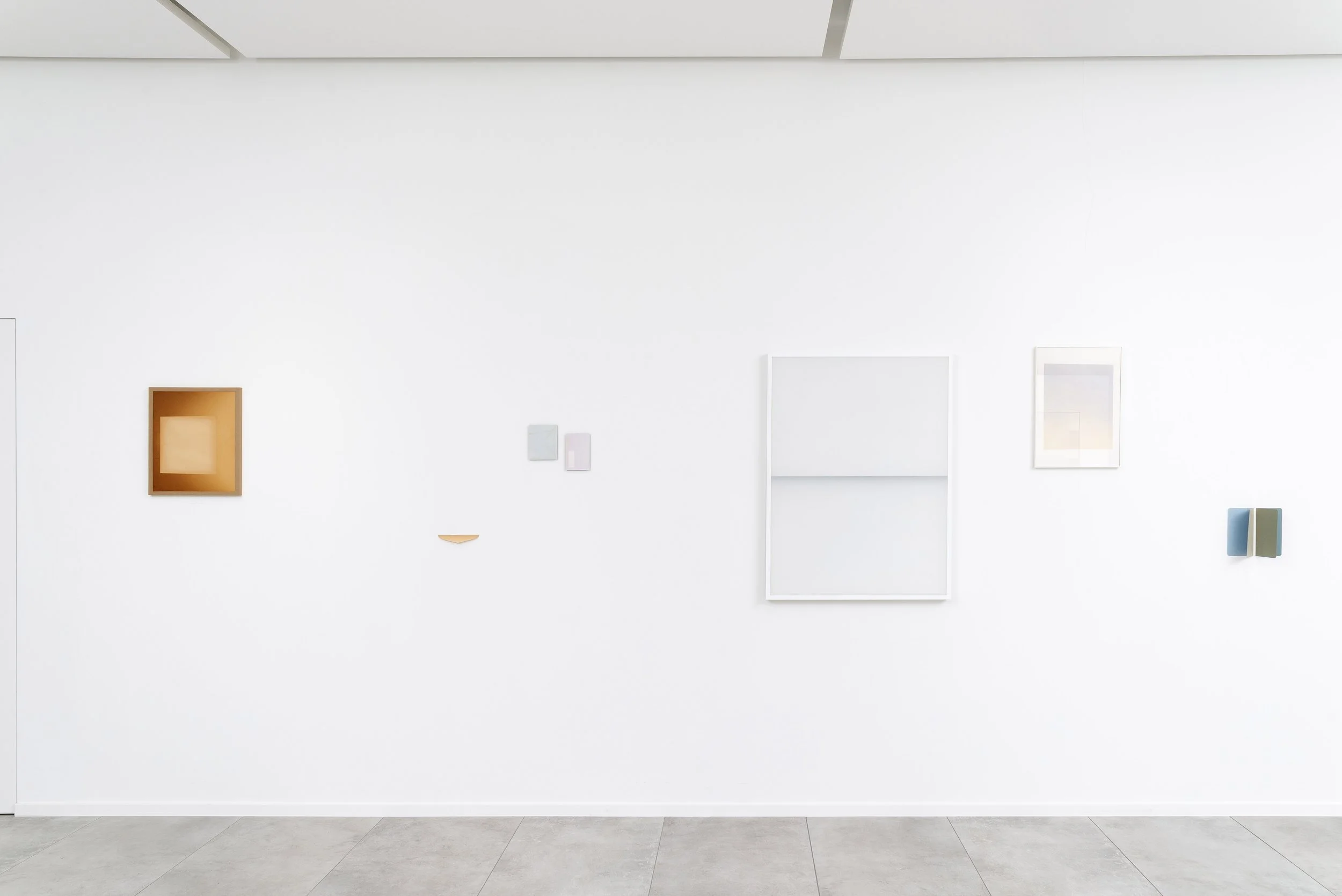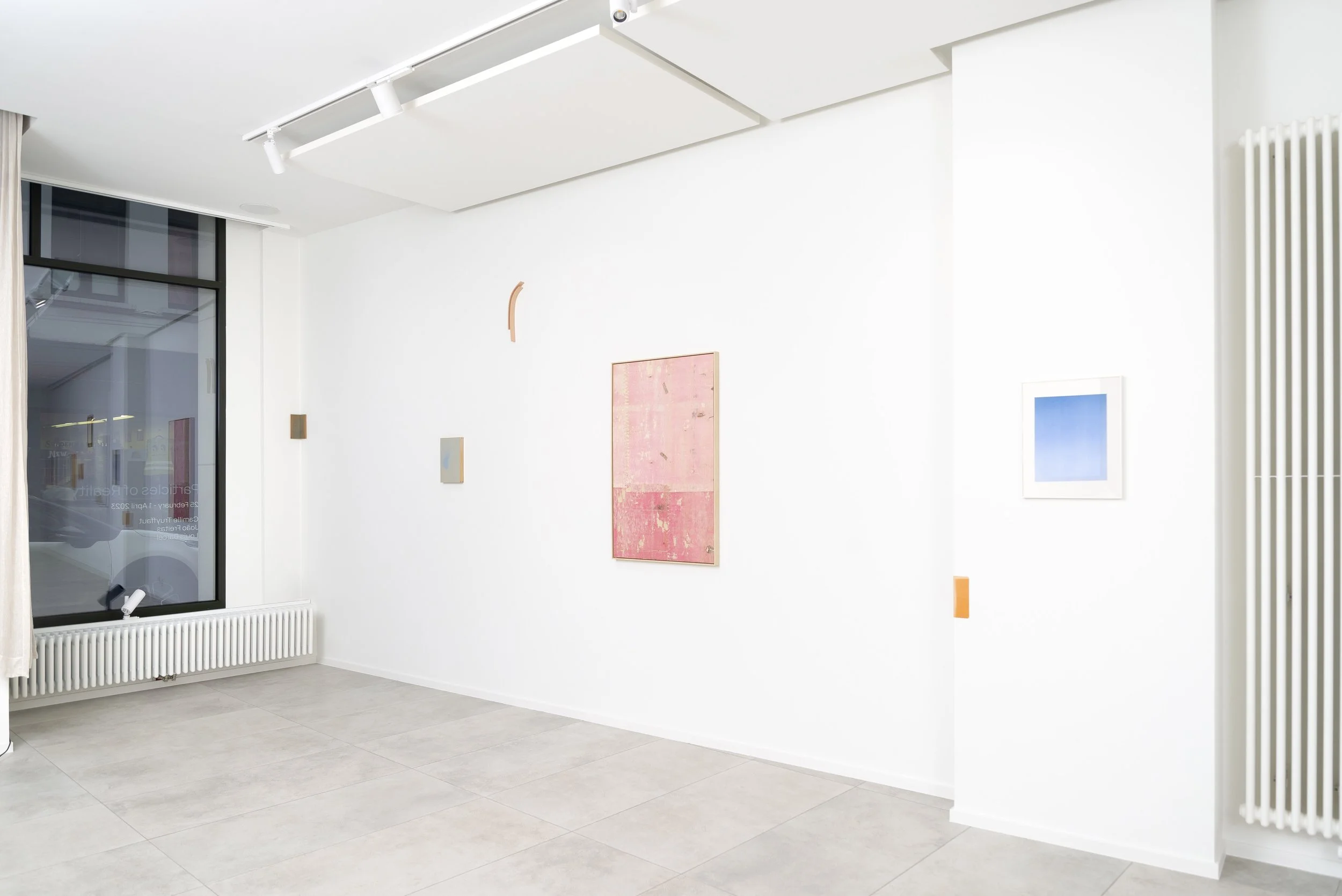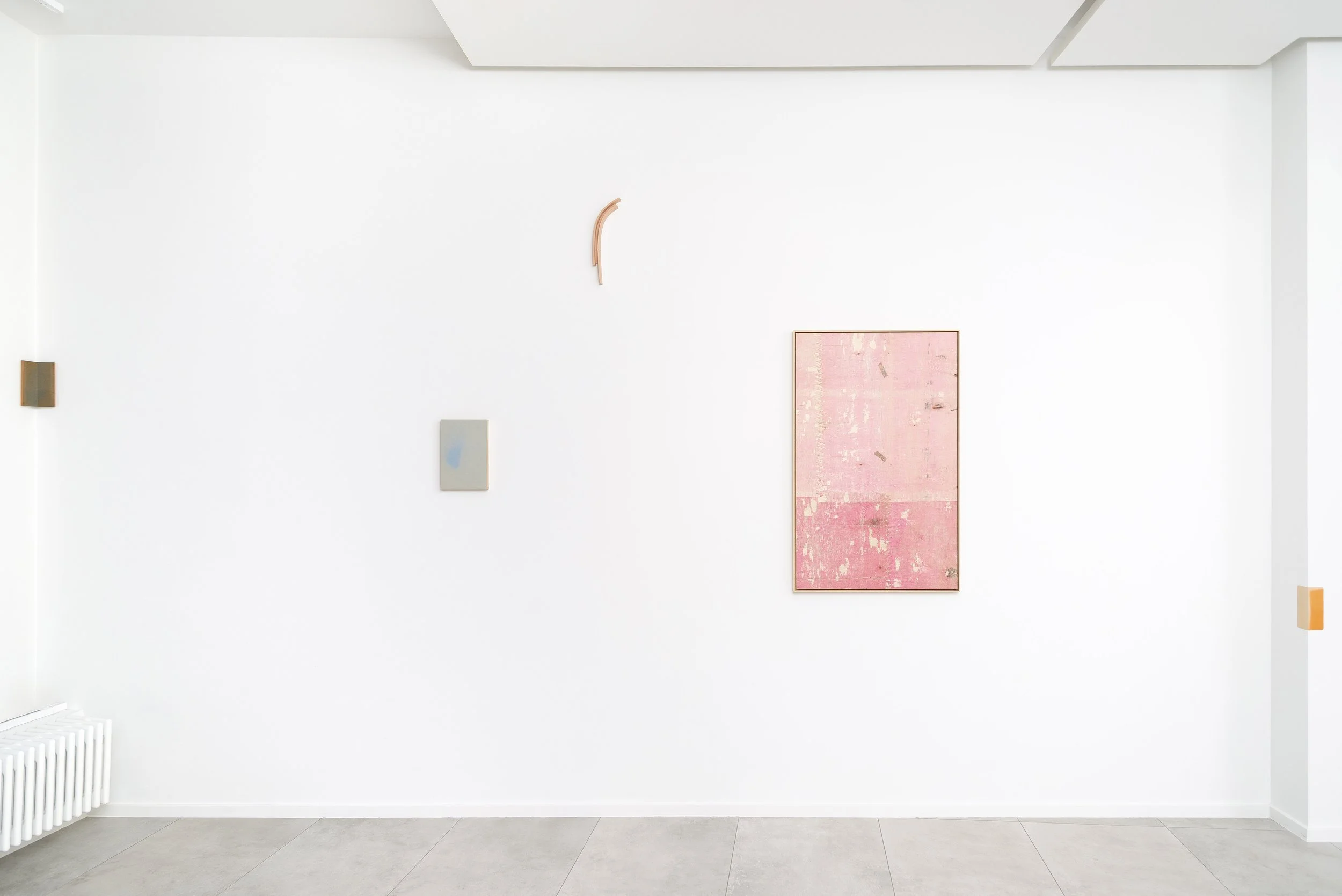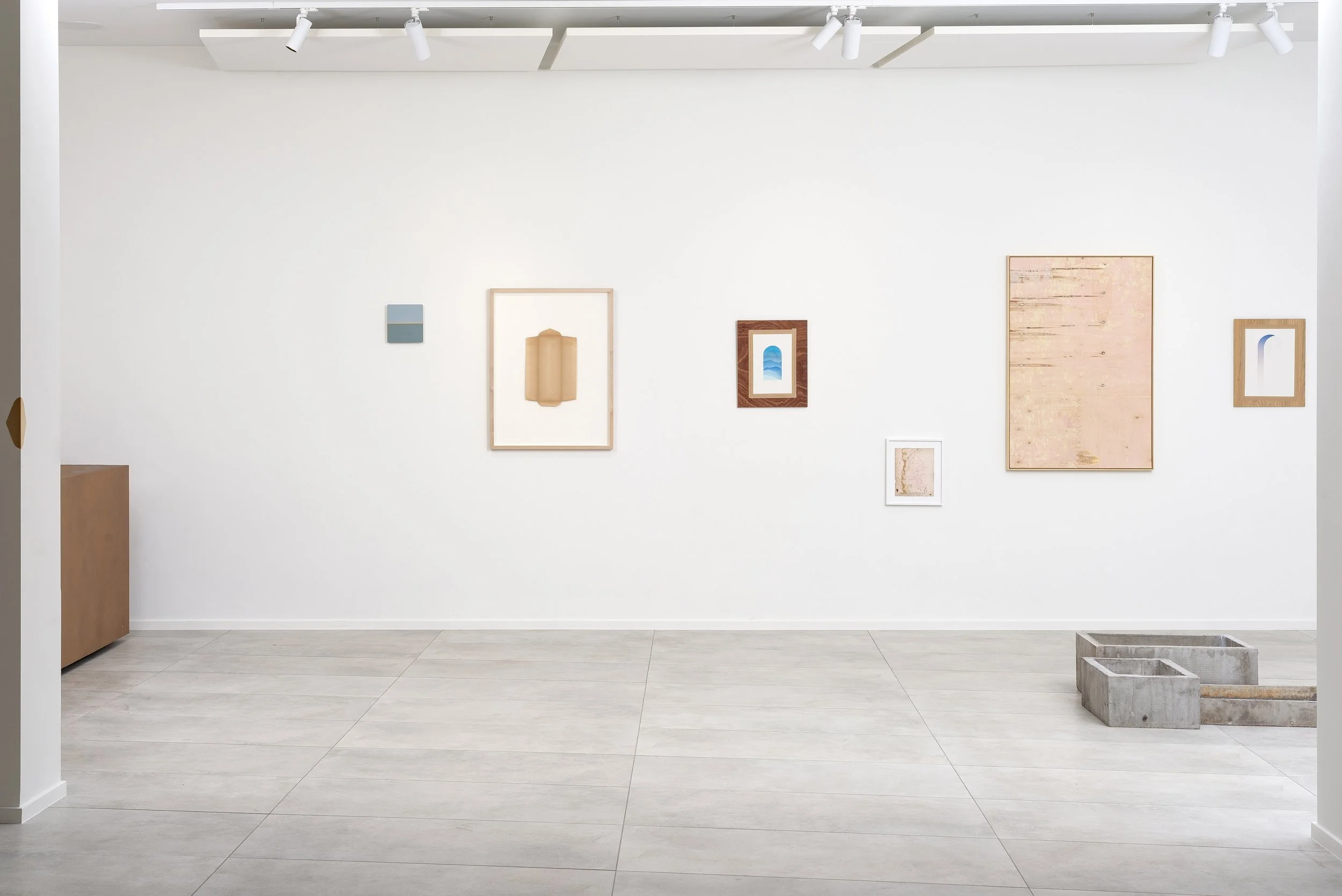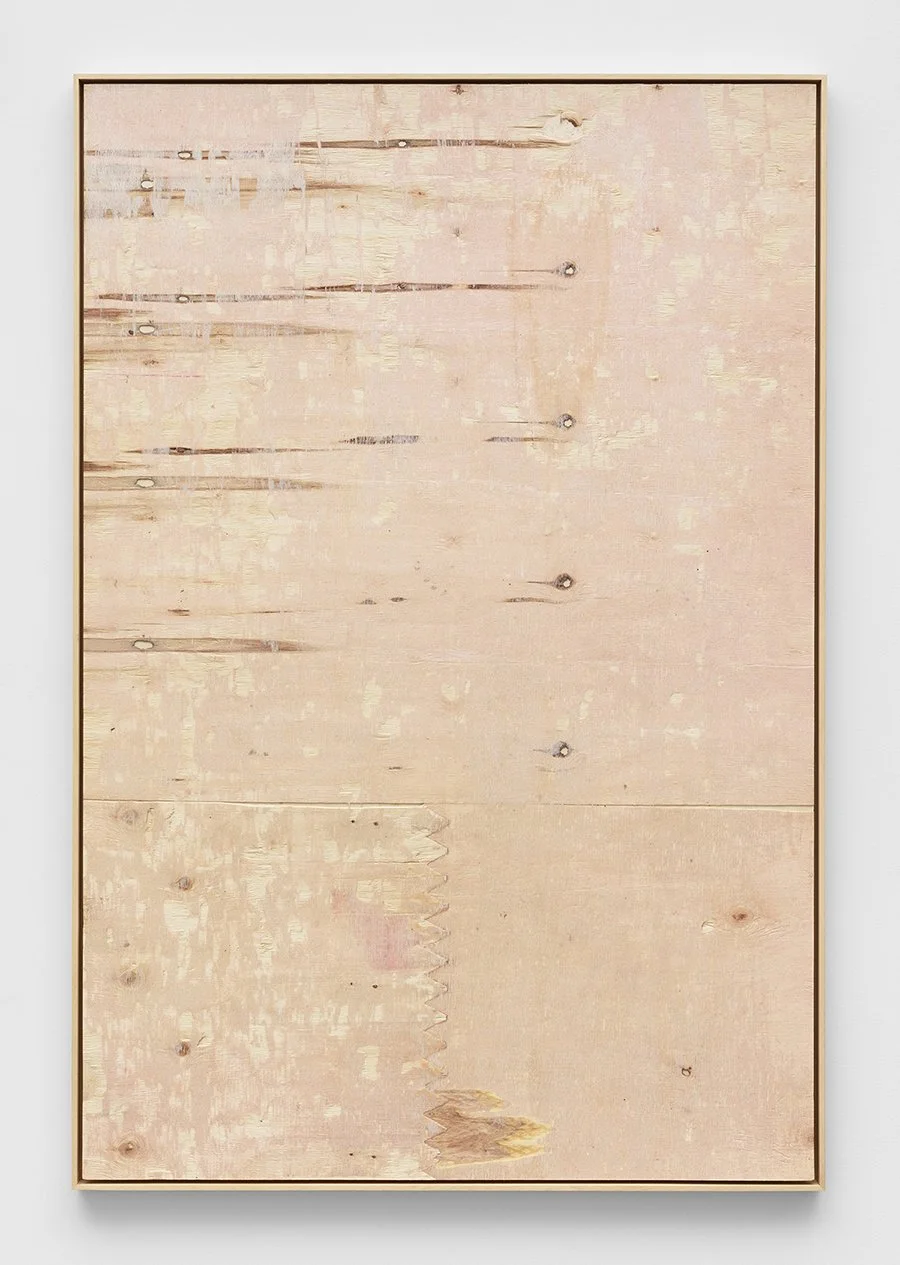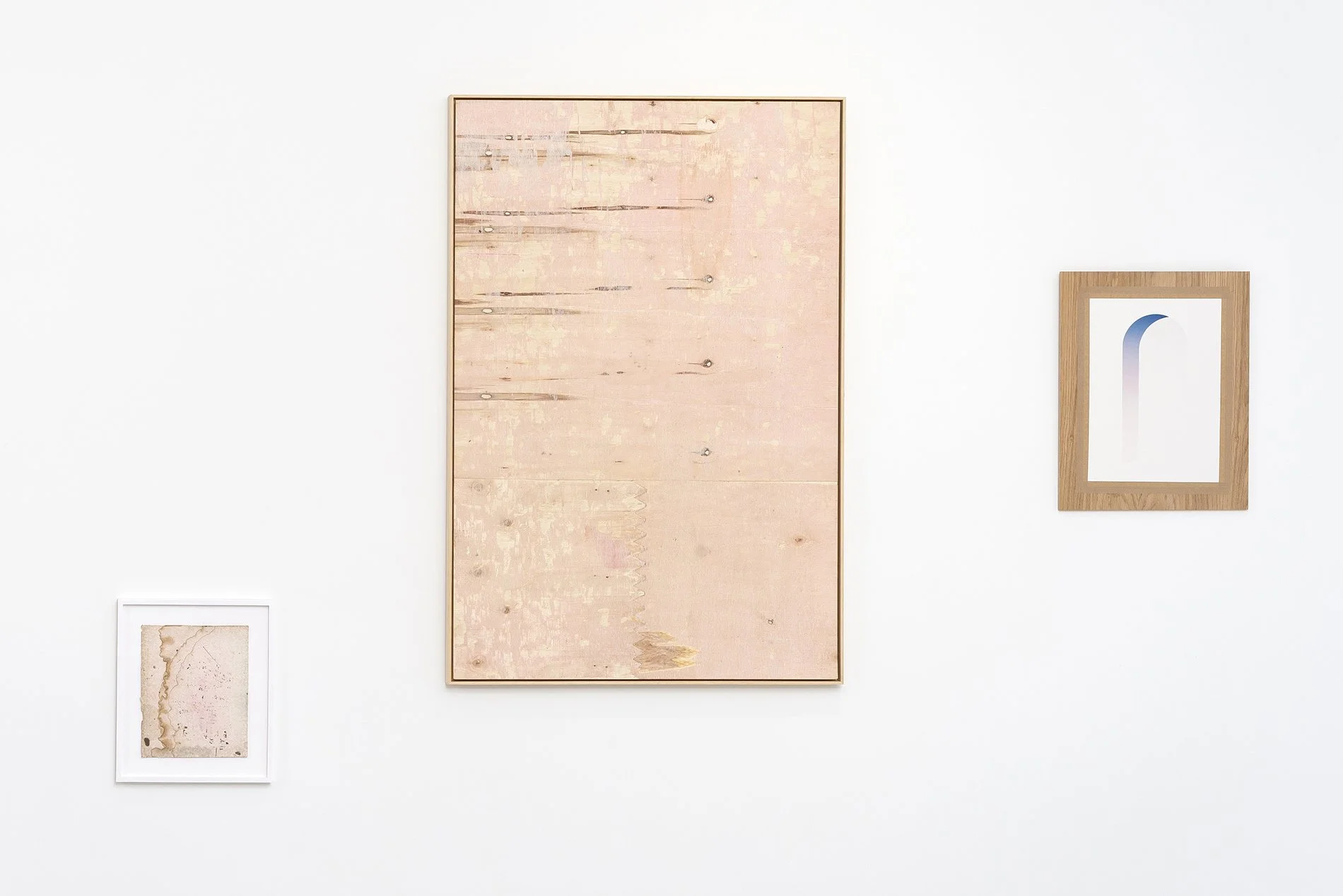Particles of Reality, 25.02 - 01.04.2023
Louis Darcel, João Freitas, Camille Truyffaut
mia-ART, Antwerp, Belgium
Exhibition view, Particles of Reality, 25.02 - 01.04.2023, mia-ART, Antwerp, Belgium | © Sara Labidi
Untitled, 2021 — Varnish, plywood (stripped) — 124,5 x 63,5 cm
Inside out (83), 2022 — Found envelope mounted on aluminium — 15,7 x 10,7 cm
Inside out (45), 2020 — Found envelope mounted on aluminium — 11,8 x 14,6cm
Inside out (31), 2020 — Found envelope mounted on aluminium — 10,1 x 15,5 cm
Untitled, 2020 — Varnish, plywood (stripped) — 112 x 72 cm
Untitled (Contract), 2021 — Paper (scratched) — 39,5 x 31,5 cm
Untitled, 2021 — Varnish, plywood (stripped) — 122 x 82 cm
Untitled (Buvard), 2021 — Paper (scratched) — 38 x 32,5 cm
Untitled, 2019 — Tetra pak cardboard protection (heated) — 113 x 93 cm
The group exhibition ‘Particles of Reality’ brings together the work of three Brussels based artists: Camille Truyffaut, Louis Darcel and João Freitas. The subtle mix of techniques and approaches which are ingrained in the artists’ work are placed in a dialogue in the exhibition space to create a poetic and aesthetic experience. The exhibition, as the title suggests, focuses on the fact that our reality is composed of different kinds of particles, fragments and elements. All three artists give particular importance to layers, materiality and space. They bring to life new realities by synthesizing different elements to form a single piece or, inversely, by disassembling different layers from a whole. By doing so they challenge the viewer’s visual perception and lure her/him to take a closer look and to contemplate.
In the past years Camille Truyffaut (b. Namur, 1993) has been collecting different objects and papers, which caught her eye. She then works on these by meticulously and playfully unveiling them, layering them or exposing them to light. She draws our attention to the beauty of ordinary objects. Fragility and lightness define her work. In her series ‘Athènes’, the artist superposes different sheets of graph paper in order to create a color gradient or to densify the color. Her series ‘Mue’ and ‘Horizon de carton’ are composed of pieces of cardboard which have been intentionally discolored by the light. For ‘Passé simple et futur proche’ the artist assembled old pieces of paper whose colors have changed due the passage of time. These materials embody memory and stories which can be seen through the variations in colors and traces left behind.
With his sculptures, installations and paintings, Louis Darcel (b. Paris, 1988) achieves to mislead our perception. At first sight, his series of watercolor works ‘Pas de côté’ seem to be windows to a gradient sky, but at closer examination one is faced with the reflection of an unknown space, different to the room in which they are exhibited. Confronted with the subtle reflections depicted in these works, we are invited to take the time to explore the space and its perspectives, inciting us to question the surrounding environment. The frames are integral part of his work as the artist uses the same paper on which he applies watercolors to create his frames. For his installation ‘Le Pactole’, the artist was inspired by old communal washhouses that can still be found in certain villages located next to a river or near the coast. The cement blocks which are lying on the ground appear like openings to new horizons.
João Freitas (b. Coimbra, 1989) mainly uses materials that he finds on the street, at construction sites or on trips, such as, plywood, envelopes, found paper or Tetra Pak protective cardboard. By peeling, scratching, heating, stripping or tearing them apart he reveals the hidden side of these elements and finds a new meaning for them. He transforms these forgotten materials and presents them to a public who would normally not notice them. In his series ‘Inside out’ Freitas exposes not only the colors and patterns of the inside of used envelopes but also uncovers the traces that writing and sticking stamps on them have left. By pressing these envelopes on aluminum plates these marks are brought to light. For his plywood series the artist removed layer after layer until he came across a colored and patterned surface.
Atena Abrahimia
